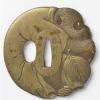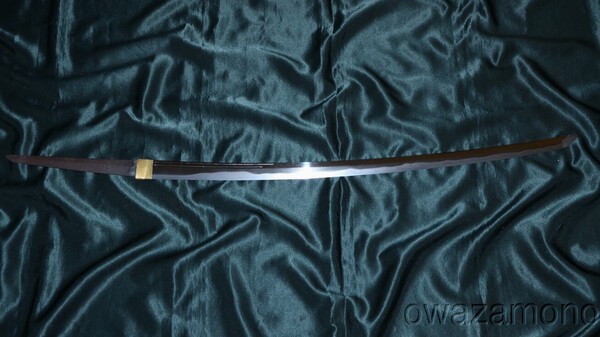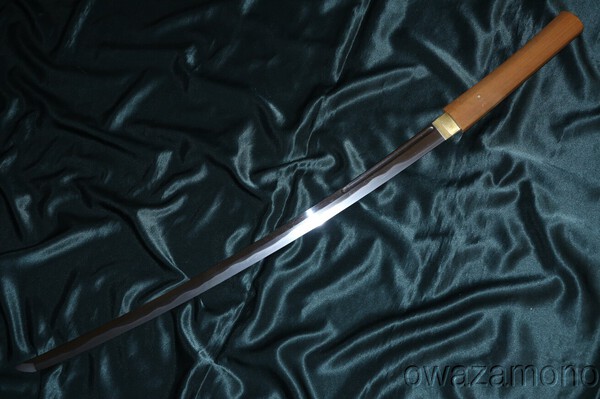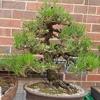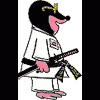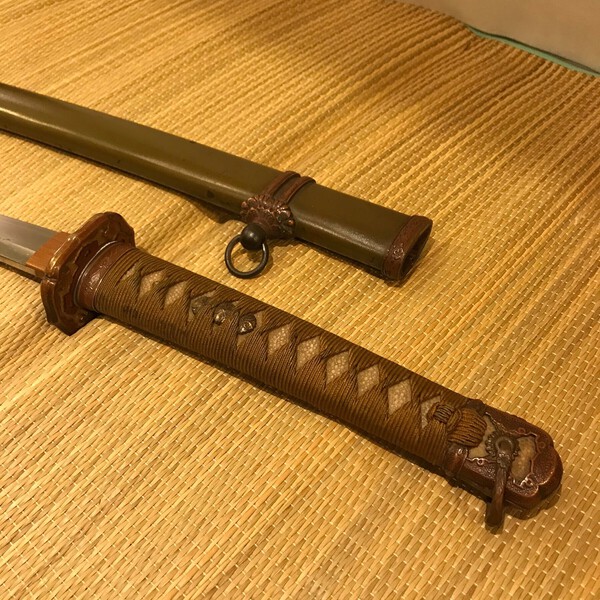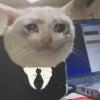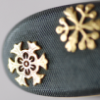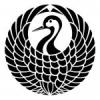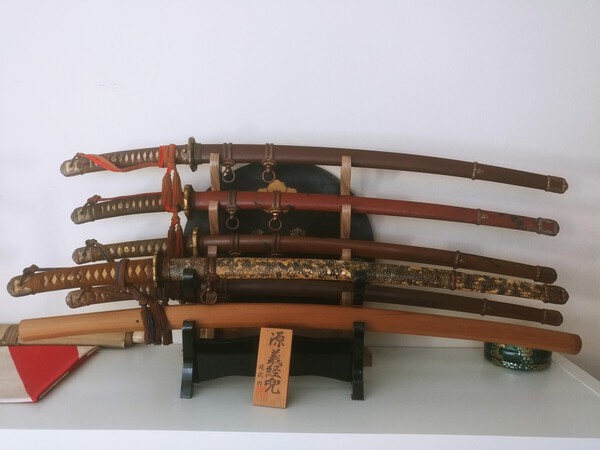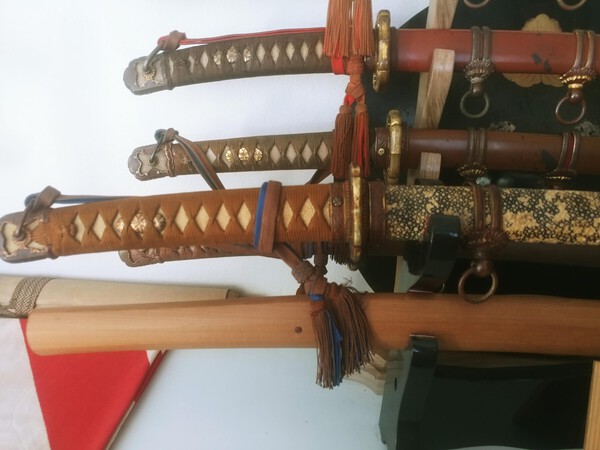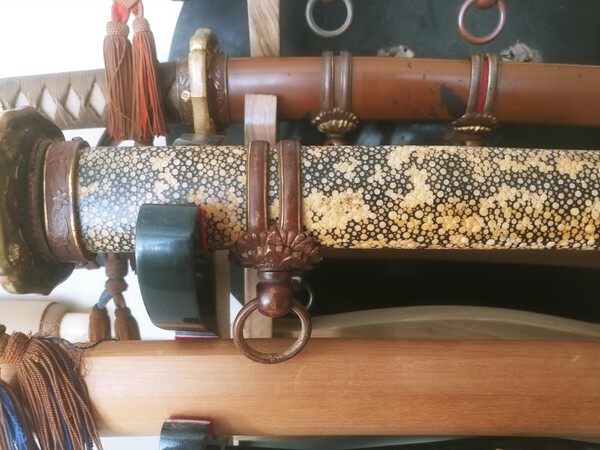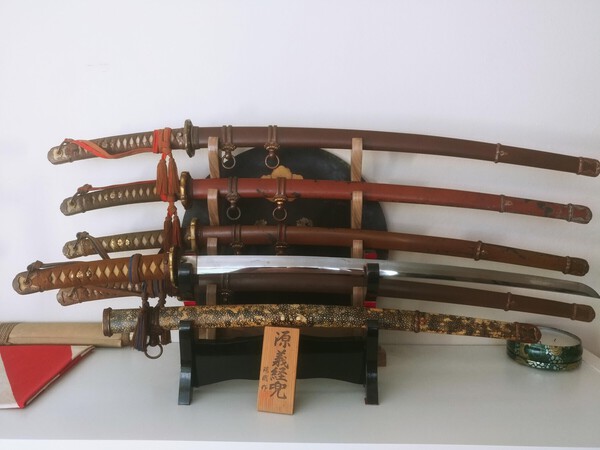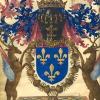Leaderboard
Popular Content
Showing content with the highest reputation on 04/16/2021 in Posts
-
Hi Pietro, I currently have, counting my own that I purchased from Harry, 4 sets of the translation volumes. They are decent quality printing, well bound and on the paper you'd expect in a good book. Nothing photocopy about them. Grey2 points
-
Bob, it is said that he is from the Bushu tradition. (http://nihontocraft.com/Kunishige_Kinko_Tsuba.htm) Best regards2 points
-
2 points
-
If my memory is still good, the swordsmith who's mei is Echizen no kuni ju Shimosaka is Kanesaki the father of shodai Yasutsugu. It seems that shodai Yasutsugu never signed tkat way. I will check the Yasutsugu taikan to be sure.2 points
-
Hey just wanted to share my first nihonto. Got it for what I believe is a good price(2225$usd-ebay auction) i know yall said to be wary of eBay and I am but I was told that this particular dealer is one of the few honest ones on ebay. Most pics are from him as I suck with my camera but I included a few pics myself. I'm super wet behind the eats so u apologize for any rookie mistakes on my part period when posting. What books would you recommend to accompany this sword so I can start to study it? Any other advice? (Here's the specs provided from dealer Blade Jidai (era) : circa 1600's Shape : Shinogi Zukuri with A strong deep sori / curve Horimono on both side : short single & double bohi on both side School : Kaga Nagasa/cutting edge : 26-1/4" or 66.7 cm Tang : 8-3/4" or 22.2 cm Total blade length : 35" or 88.9 cm Blade thickness at the habaki notch : 6.86 mm Width at the habaki : 1-3/16" or 3.0 cm Width at yokote level : 3/4" or 1.9 cm Sori/curve : 13/16" or 2.1 cm Strong point : 1-1/4" or 3.2 cm Katana Hamon : A beautiful superb & flashy big Doramba-ba on both side, with lots of Nie, & there is big boshi turn-back on both side.)1 point
-
1 point
-
Yasurime can be shinto. Regarding the price, the issue is the same as bringing a dealer's sword to a sword club - what are the chances of getting an honest opinion? I've sold a dozen pieces to Eric over the years, I obviously not going to badmouth his goods. And vice versa - if you bring up a sword from an unknown dealer, chances are people will badmouth it simply because its a competition they don't want. So in questions like that, one is mostly on his own. I would certainly take all opinions with a lot of salt. This sword will paper, and its pretty much known how it will paper, so the risks are probably minimal on this front. The price is not really high in terms of nihonto prices.1 point
-
Do you not know honestly not know the difference ? I'm not talking about the original Japanese volumes, i'm talking about the original English translations by Harry Watson published under AFU. Go look at this link, I believe these are the original 1991 books which Harry published You do show clearly and have no problem with displaying the cover page of the book which credits the original book writers, Harry's name and his publishing company (AFU Research). Your defense is that what he did was illegal, so you claim that what you are doing is fine? Even if there are no legal repercussions, which I suspect is not the case, there is a moral and ethical issue in trying to profit from what he did. How about amending your listing and and stating clearly that the books that you sell, even though it looks like the AFU editions, is actually not the 1991 editions?1 point
-
Yas wrote: > I think the Japanese stirrup is shaped like sandals so that when the horse doesn't follow the instructions, it must be able to jump off immediately. Could I suggest that a "sandal" stirrup provides a more stable platform for standing up and shooting arrows even with the horse at gallop?? BaZZa.1 point
-
I have had a change of heart and have decided to withdraw the Okimasa at this time and sell some other items instead. Kind Regards Doug1 point
-
Congrats, nice looking sword. You may want to search the board on the use of uchiko. Its getting more common to use micro fibre instead as the uchiko gradually scratches the blade surface and dulls polish.1 point
-
1 point
-
My guess is Fujiwara Kunishige (Haynes H03649). I really would like to have this one in my collection !1 point
-
Hi Charles, get some photos for us before buying.1 point
-
1 point
-
Item No. 27 Katana sized tsuba in brass and mixed metals inlay 7.81cm x 7.92cm x 0.44cm Theme of waves. NBTHK Hozon papers I have had this tsuba for over 18 years but it was not until writing out this post that I realised I do not have a translation of the signature or papers. If anyone can help , I would appreciate it... A scan of the papers is attached separately , as the signature itself is indistinct and is not easy to read. The tsuba looks different today from when it was papered - I have had the Hitsu-ana plugs removed . Where a tsuba has plugs which are the first things you see when glancing at it , then unless they are part of the original design , in my view have just been added to make the fitting more saleable to the Western buyer or tourist ( who like a bit of extra flash ). If the plugs are discreet or have been incorporated into the original design , then they are part of the history of the piece and should be left in place . Not in this case , however. Any alternative views ?1 point
-
Yes , i did not buy them from you, bought from another collector who was not unaware of the original copies. What I'm taking issue with is that the copies are made to look very much like the original hardcovers from Afu , cleverly reproducing the page with the red seal stamp in colour so that it looks like the real deal. I don't see any indication in the website listing that these are not the originals. There is a picture of the books which look exactly like the originals however. Perhaps a revision of the listing is appropriate.1 point
-
1 point
-
The little upright feature on the left is called the ibo-kakushi or wart-guard/screen. They *tend to have different shapes by area, as Jan says, with Iyo having a diagonal, forward-falling top facet. Iyo back sights tend to be a solid rectangular box, whereas Sendai's are stepped. Your 'rather flat design' is true, and does make things difficult. If anything, Iyo are the flattest of the lot, though Satsuma long guns also seem to be rather featureless at a distance. The loop 'pierced' trigger is also a common feature between Sendai and Iyo, although Sendai will often have a trigger guard too. The decorations, if present, and the choice of wood have very different feelings. At a glance, Sendai long guns (to me) have a more solid appearance, whereas Iyo-zutsu seem altogether lighter and less substantial. *'Tendencies' is probably the safer way to go as confusing exceptions to the rule will pop up all the time!1 point
-
For a general knowledge i love the "Facts and Fundamentals of Japanese Swords" book and Kanzans The Japanese Sword. For more detail of the craft the books where yoshindo yoshihara are involved are my favorites and then i think it gets specialized. Also the Markus Sesko books are good and many good knowledge can be found here http://www.ksky.ne.jp/~sumie99/index.html just check the terms and information area. I want to say that sometimes a small ware turns out to be a bigger problem after a polish but i dont think this blade needs a new polish soon if you take good care of it. http://www.ksky.ne.jp/~sumie99/flaws.html1 point
-
I have a collection of habaki that I have been accumulating for years. This is just the kind of occasion that I find it useful. It's amazing how often I find one that fits well or at least ok.1 point
-
1 point
-
Thank you, Bruce. I am not an expert, in actuality, I am so new that it is sometimes a bit overwhelming. Just being honest. I have been interested in these since I was 5 years old. When I was around 21, I learned that the ones Vets brought back home sometimes were older than WW2. It has only been in the last year or two that I have had occasion to buy (always something else that I spent on). Well, in the past two years I bought two katanas. I know it is not much of a collection, but with a family it is what it is. My goal is to learn more and I suppose this is not anything fancy but I would dream of owning a per-1800 blade. One I have is late 1800s, the other is WW2, but an officers sword, with a family crest. I really appreciate the help. I think I might YOLO this one because it is doubtful I will have time to think it over...person does not run a shop and is a long time collector of good reputation.1 point
-
1 point
-
1 point
-
Hello, see also: https://nihontoclub.com/view/smiths/meisearch?type=All&mei_op=contains&mei=吉政1 point
-
1 point
-
1 point
-
1 point
-
Hate it when comments are turned off and I can't tell them what a dumbass they are.1 point
-
This should help for maintenance: http://www.nbthk-ab.org/swordcare.pdf1 point
-
I came across this video. I don't know if it has already been published here but in any case it's catastrophic ... the problem is that it's more common than you think ... video that hurts0 points
-
0 points
-
All swords need to be tempered. Plus aesthetics. That choji hamon cost me an extra 100 bucks. Suguha would have been cheaper. I could have spent more for a more flamboyant one but I didn’t want to break the bank. The L6 is actually very difficult to work with and any fancier hamon he would have had to make the blade several times to get it right. It would have cost me 1700. He politely asked me not to make him do it as well when we were hammering out the details of the blade. When your buying from a Japanese smith your paying a huge amount for the Japanese laws regarding sword making. They can make three a month I thought it was less. They also have to do an unpaid apprenticeship. They also cannot use any modern methods or metals. Your paying for this extra hard work that is unnecessary with modern metals and equipment. About this video they are destroying nihonto katanas there my friend. Go look up someone doing this to modern 1060 or higher. I am speaking from personal experience. I have destroyed a modern nihonto in a stress test versus this katana. Thats right i said it i destroyed a modern nihonto. Hate me if you must. This L6 toolsteel took everything i threw at it and is perfect and healthy. Europeans did not develop differential hardening anywhere near the same way Japanese smiths did. They used hot tongs and interrupted quenching to achieve the desired flexibility and edge retention. They quench the blade and reheat the spine and quench it again. Japanese swords developed the more advanced hamon to give it a softer spine and harder edge. Thus making their design more flexible than they would have been able to achieve with the process and difficulty involved in separating higher and lower carbon iron. The whole process of making tamahagane is to add carbon to the extremely low carbon iron sand from rivers. As opposed to already high carbon iron mined out if the ground. Once the higher and lower carbon steels are folded the hamons purpose is to make the edge harder and better edge retentive while leaving the spine softer. You just dont need to do all this folding when starting with higher carbon steels. You do still need to temper. All of this technology was driven by necessity. Tamahagane by its very nature has MORE impurities than modern steel. The whole reason for folding the steel is to remove the impurities! You literally do not have to fold modern steel unless you just want to make the blade more traditional looking or prettier. It costs a little more and is entirely unnecessary. I paid extra because i was making something pretty with a hitatsura hamon( the one i just ordered not this one i pictured. ) You cannot fold L6 i am told for any price, they just wont do it. The sulfur in l6 bainite is what makes L6 bainite. Plus a little magnesium i think. Its an alloy and everything in that alloy is supposed to be there. For that matter all steel is an iron/carbon alloy. And to agree with you on one thing YES you’re entirely paying for artistic value. What i am describing is the difference between a ferari and an armored humvee. Yeah the ferari is super nice, very expensive, pretty with all the bells and whistles. Its super exclusive and you need to get in the waiting list for a new one. Who doesnt want a ferari if they had the chance? If you slam the ferari into the armored humvee you’re going to need a new ferari and the armored humvee is gonna keep on trucking. All modern nihinto are works of art to be cherished and appreciated, but if you want something to abuse you definitely dont want to buy that ferari unless you just have that kind of money. Ive already been admonished about this conversation and I honestly appreciate the fact that youre even listening to me and having this discussion. Please dont take me as being rude or derisive. You asked so Im trying to explain my point. Im not buying a crap fake like the ones you see here from time to time made to cheat someone, and thats the only reason i felt the need to say what I did that started this whole conversation between us. It is just a plain cold fact that modern steel and technology can produce a more durable sword than traditional nihonto smithing methods. If you have a problem understanding this i dont know how to better explain what is a simple truth. Your gonna have to buy a high quality modern sword and find out for yourself. @DoTanuki yokai To disagree with this is to disagree with SCIENCE.-1 points
-
Seriously this is like arguing with a child who believes in santa claus. The things you are saying are myths. And categorically untrue.-1 points
-
False. The carbon is what is making the steel. The higher the carbon the more flexible and durable the steel. Simple basic science. @DoTanuki yokai And your knowledge is non-existent. Go bend your nihonto katana and cry im done. You linked me a video of nihonto smiths destroying katanas as proof they will stand up to modern steel. I linked you a video of a famous American smith explaining why youre naive and anothed video of high carbon steels being stress tested the same way as your nihonto and passing. At this point youre being willfully ignorant.-1 points
-
It so seems the Tsuba found a new home....Thanks! and "little Buttom-Joe" is looking onto his banana-peel..... Christian-1 points
-
You attack me here in public for your stupidity. I have nothing to do with your buying.Here is it allowed to sell these Books. And i sell only a Translation, not more. These Books has no Copywrite. If you had googled for the books, you could easily have seen the difference. Alone the size is different. Both Links here from the Original and the Books on my webside. http://www.japanesesword.de/?site=book&id=2&lang=en Tom-2 points

